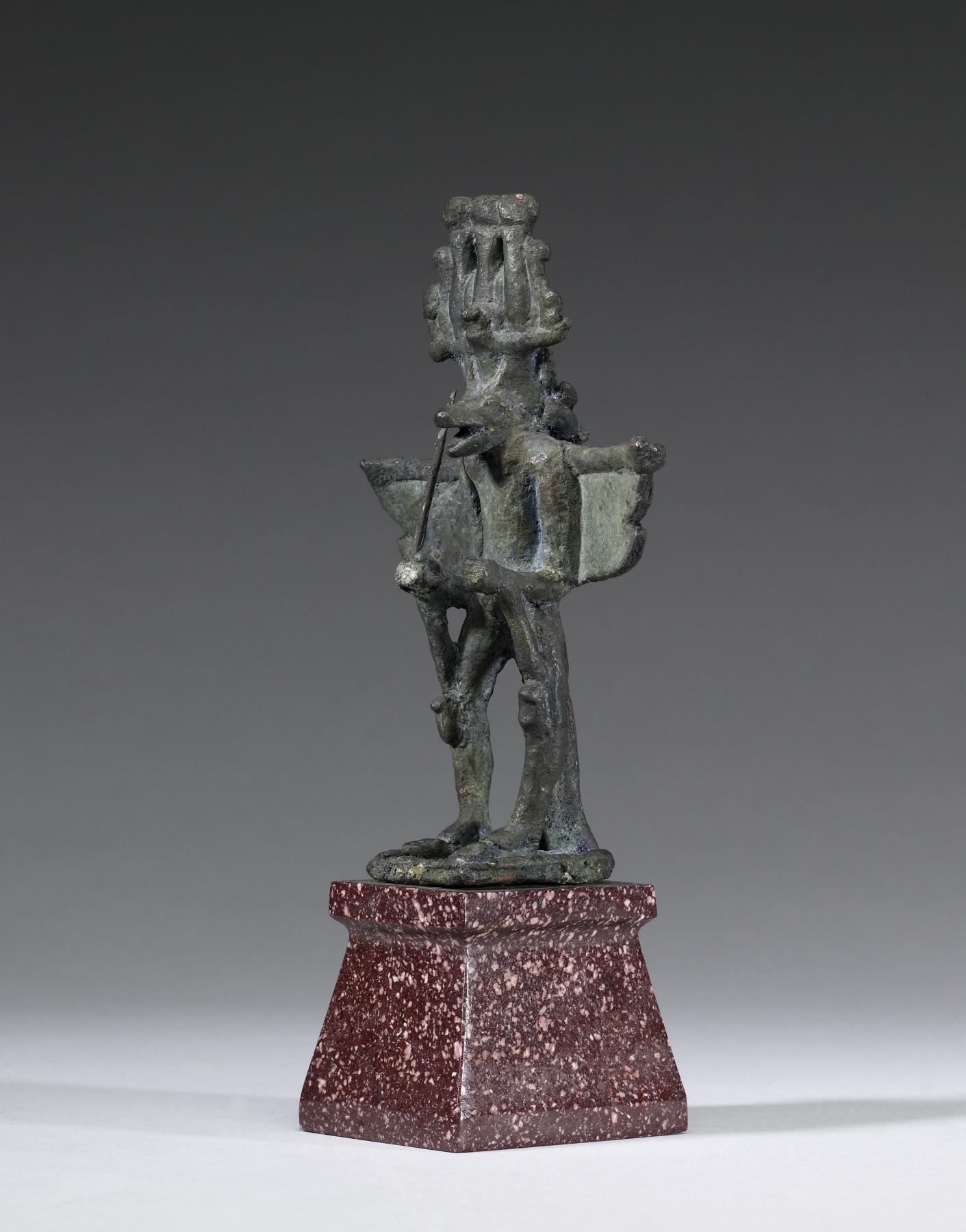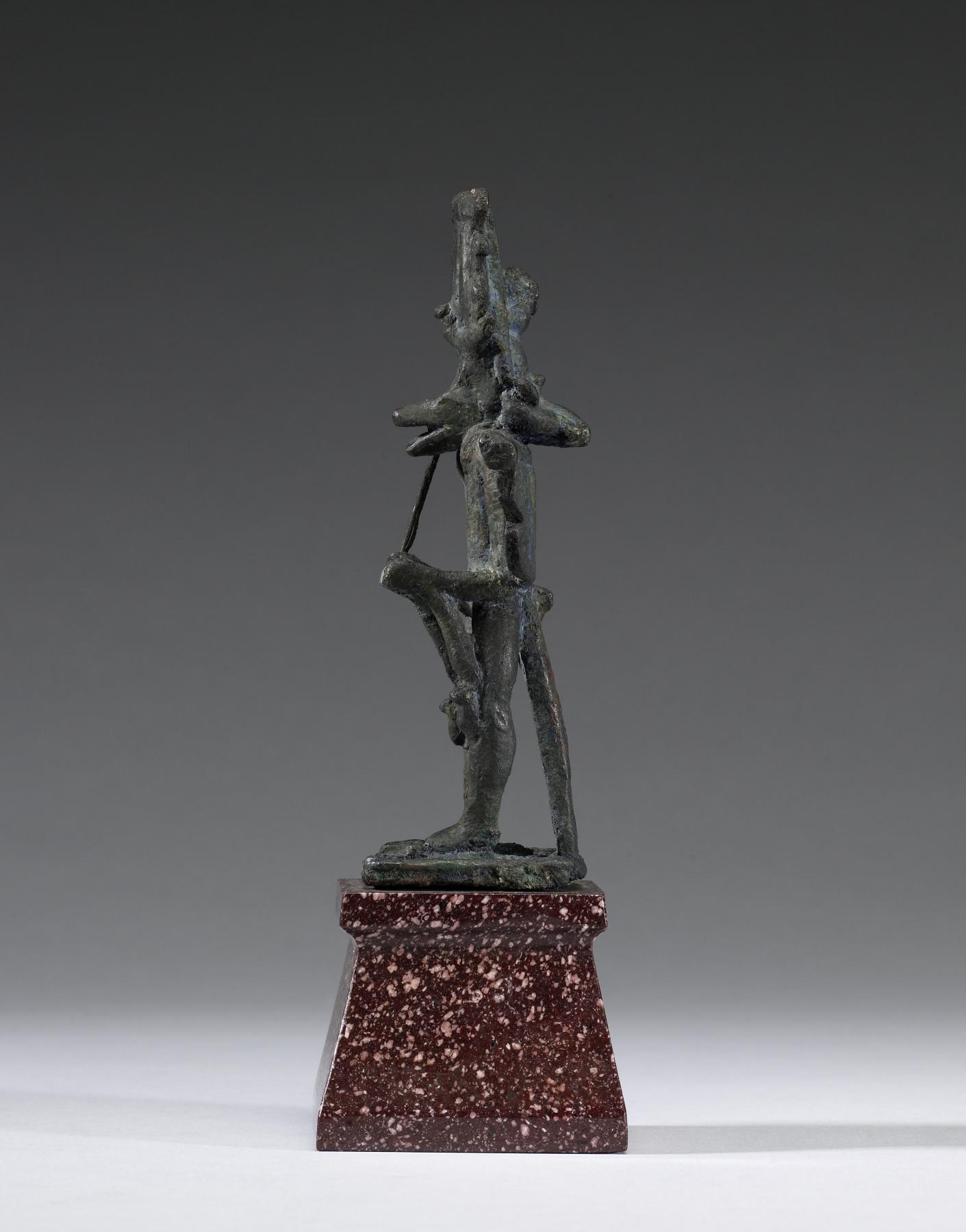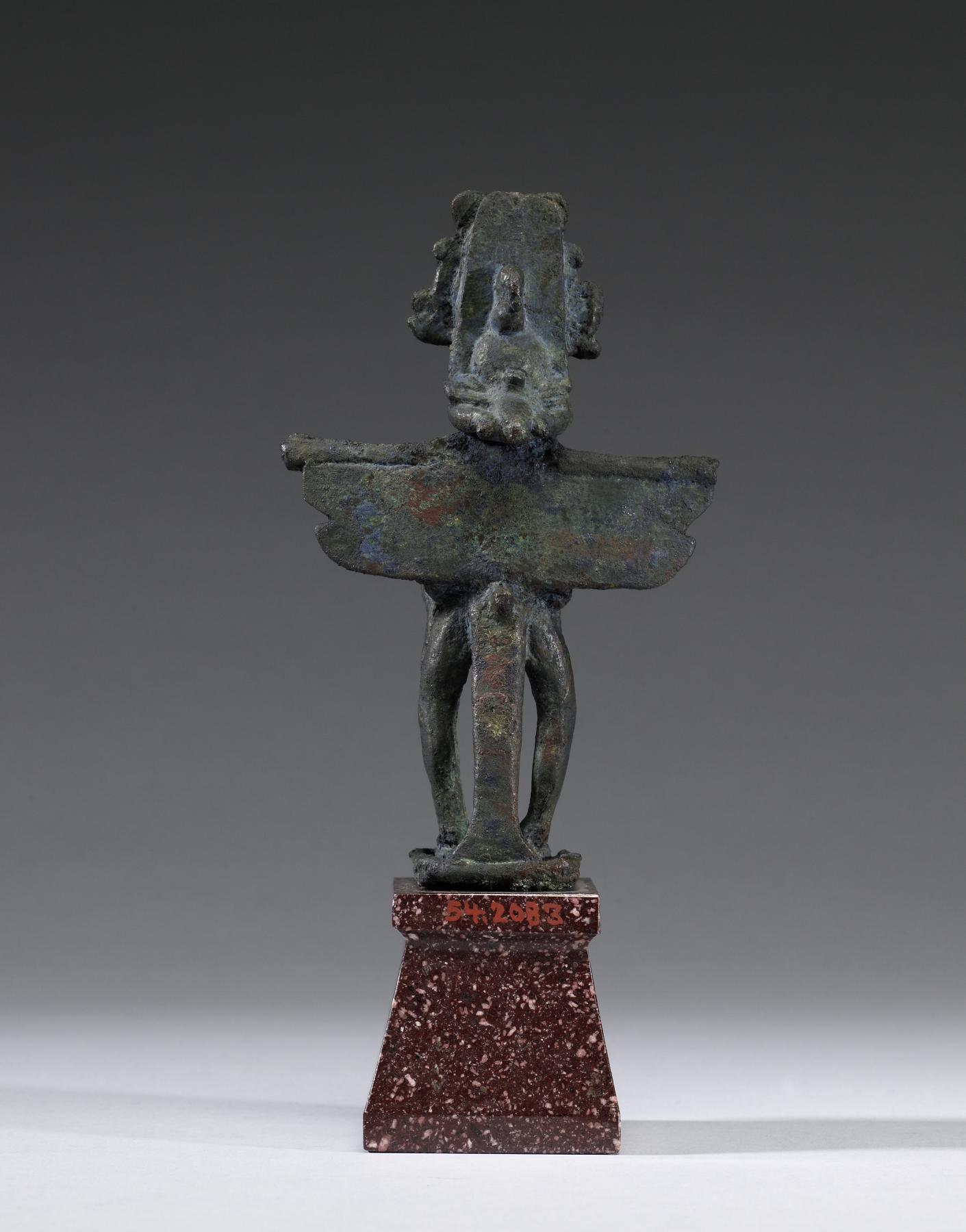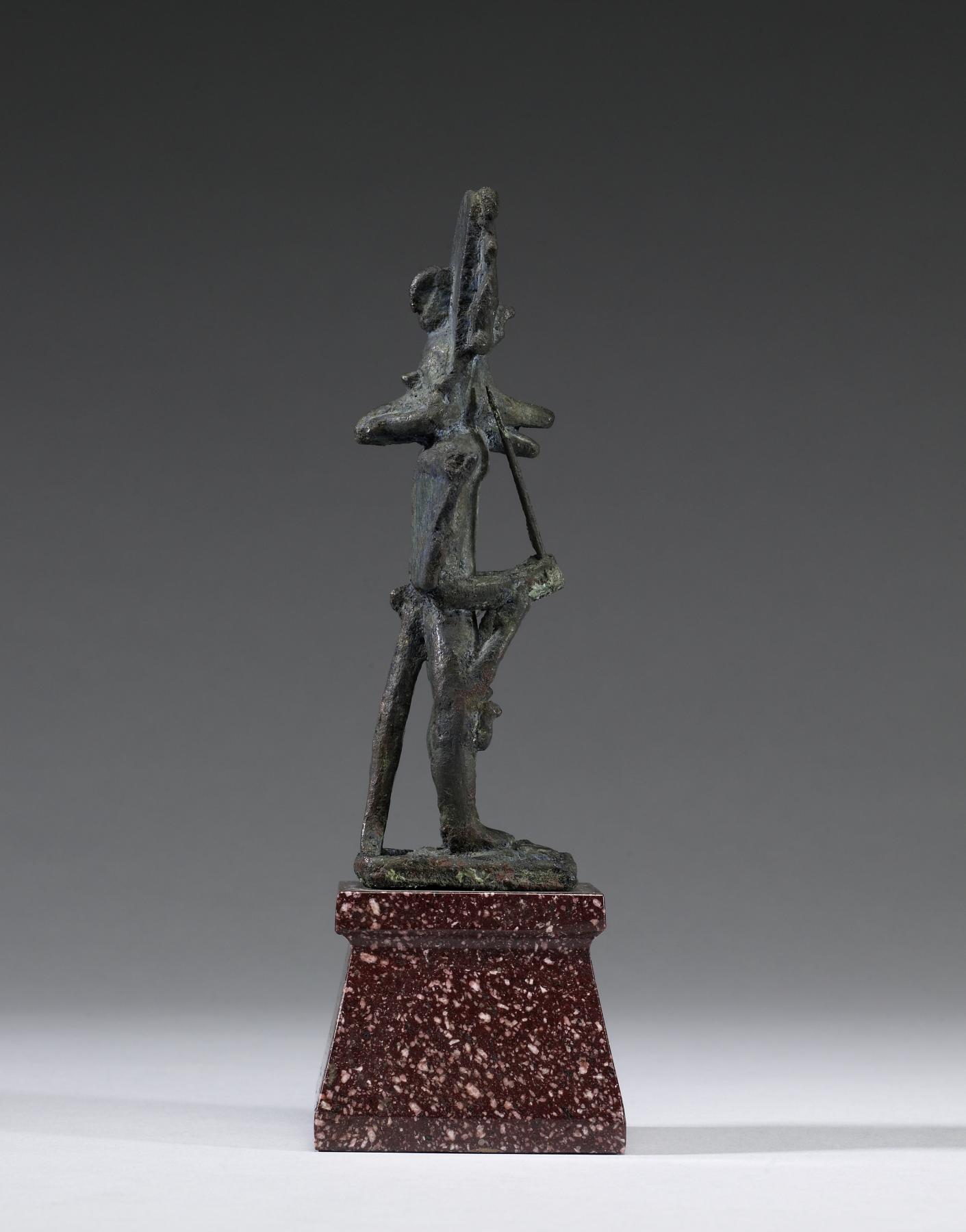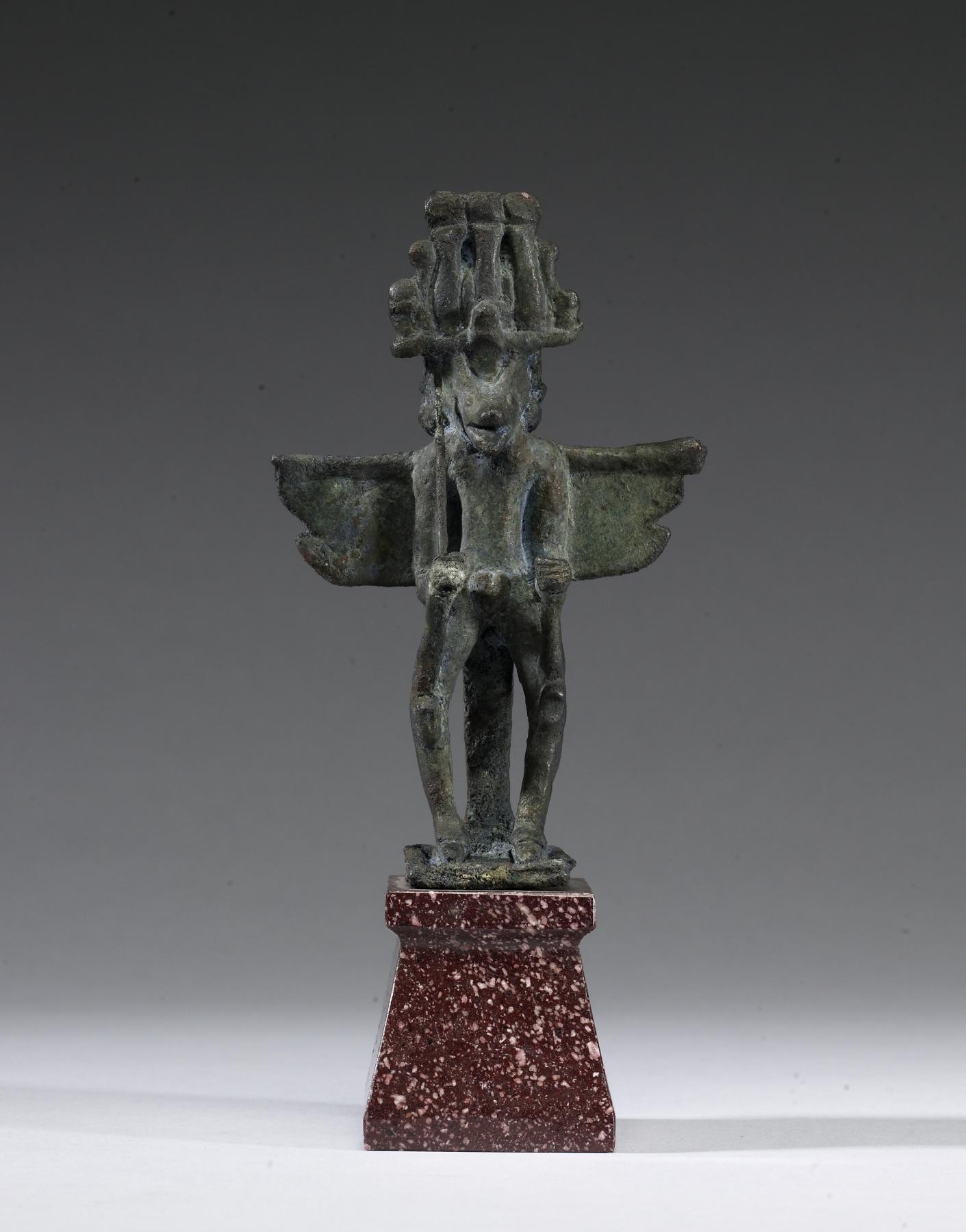Composite Figure of Amen-Re
(Ancient Egypt and Nubia )
Representations of pantheistic deities became very popular in the Late and Greco-Roman periods. They combine different divine aspects to provide the donator of such an image with all possible protection and support. The magical function of these representations is well-known and some of the images, such as on papyri, were combined with magic spells or words. This figure combines aspects of a human body, a jackal, and a ram head, with a bird's tail and wings. He is standing on crocodiles and his crown refers to Amun and Osiris. All of these symbols clarify that the depicted divine creature embodies all major divine aspects as well as magical power.
Provenance
Provenance (from the French provenir, 'to come from/forth') is the chronology of the ownership, custody, or location of a historical object. Learn more about provenance at the Walters.
Giovanni Dattari, Cairo, [date and mode of acquisition unknown]; Lambros-Dattari Sale, Hotel Drouot, Paris, 1912, June 17-19, 1912, p. 48, no. 418; Henry Walters, Baltimore, 1912, by purchase; Walters Art Museum, 1931, by bequest.
Exhibitions
| 2006-2007 | Daily Magic in Ancient Egypt. The Walters Art Museum, Baltimore. |
Conservation
| Date | Description | Narrative |
|---|---|---|
| 4/30/1957 | Treatment | cleaned |
Geographies
Egypt (Place of Origin)
Measurements
H: 5 1/2 x W: 3 7/16 x D: 1 3/4 in. (14 x 8.7 x 4.4 cm); H with base: 7 7/16 x W: 3 7/16 x D: 2 3/8 in. (18.9 x 8.7 x 6.1 cm)
Credit Line
Acquired by Henry Walters, 1912
Location in Museum
Not on view
Accession Number
In libraries, galleries, museums, and archives, an accession number is a unique identifier assigned to each object in the collection.
In libraries, galleries, museums, and archives, an accession number is a unique identifier assigned to each object in the collection.
54.2083

